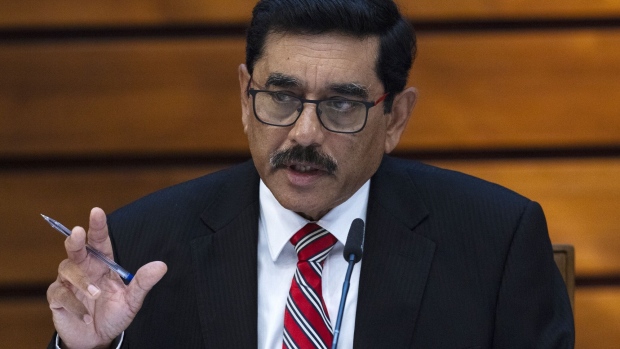Mar 21, 2023
Sri Lanka Says Unique IMF Loan Design Will Lower Market Rates
, Bloomberg News

(Bloomberg) -- Sri Lanka’s bailout by the International Monetary Fund will help the bankrupt nation lower its borrowing costs, thanks in part to a change in how the cash can be used, central bank Governor Nandalal Weerasinghe said.
The Washington-based lender for the first time will allow Sri Lanka to use funds from the $3 billion bailout to cover government spending, Weerasinghe said in an interview late Tuesday in the capital Colombo. The South Asian country’s 16 previous bailouts only targeted balance-of-payment support.
“That will ease the government borrowing requirement from domestic markets,” Weerasinghe said. “This will help bring down the interest rates and ease the pressure on the domestic interest rates further.”
Currently, the yields for the one-year Sri Lanka treasury bills stand at nearly 26%.
Domestic bonds due July 2033 were steady on Tuesday after the IMF announced a 48-month program for the country. The first tranche of $333 million from the IMF, and fresh funding from other multilateral lenders, is expected to help restore stability and rebuild foreign exchange reserves in an economy battling recession.
Sri Lanka’s rupee surged Wednesday as the loan approval boosted optimism over the nation’s recovery from its worst economic crisis in decades. The currency rose as much as 4% and was trading at 314.80 to the dollar.
The IMF program’s objective is to see headline inflation falling back to the target band of 4%-6% by early 2025. The multilateral lender has recommended the Central Bank of Sri Lanka should stand ready to further adjust its stance over the coming monetary policy meetings.
Earlier this month Sri Lanka raised its benchmark rate by 100 basis points taking the borrowing cost to 16.5%, the highest since 2001 to secure the IMF loan.
Weerasinghe stuck by his projection of bringing inflation down to “mid-single-digits” by the end of 2023 from about 50% currently. This reduction, together with the IMF’s loan and debt restructuring, will push market participants to reduce the uncertainty premium imposed on Sri Lanka, he said.
While the IMF expects Sri Lanka to unveil a restructuring strategy by end-April, market participants fear a delay as all creditors may not agree on including local-currency borrowings.
President Ranil Wickremesinghe on Wednesday said the nation’s parliament would need to ratify the IMF bailout for the government to continue debt restructuring talks with its creditors.
Sri Lanka’s local currency debt, including treasury bills, bonds, central bank advances and loans to state enterprises, stood at around $38 billion, or about 58.3% of its gross domestic product, by end of last year, according to the IMF.
Weerasinghe declined to comment on whether local currency debt would be renegotiated.
“It’s too early to discuss various scenarios,” he said. “We are targeting to restore debt sustainability based on the IMF debt targets. That process will continue.”
--With assistance from Karl Lester M. Yap, Ronojoy Mazumdar and Asantha Sirimanne.
(Updates with president’s statement in parliament and rupee gains)
©2023 Bloomberg L.P.








